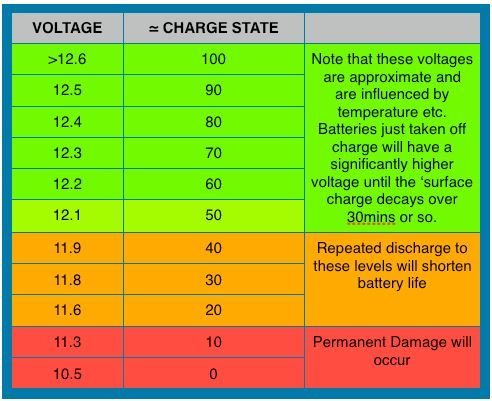Tim120
Full Member
- Posts
- 3,361
- Likes
- 9,735
As far as I'm aware I have two lead acid 100 or 120 amp/HR leisure batteries , not sure that has any relation on my question which is...
What voltage is safe to let them drop to?
Readings gradually fall from 12.8 or above to 12.2 when I'm informed via an internal panel leisure batteries are fair/poor.
What is the collective wisdoms opinion?
What voltage is safe to let them drop to?
Readings gradually fall from 12.8 or above to 12.2 when I'm informed via an internal panel leisure batteries are fair/poor.
What is the collective wisdoms opinion?

